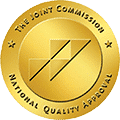Key Takeaway:
- Building self-awareness is crucial in relapse prevention for Xylazine addiction. Identifying triggers and emotions that may lead to cravings and addressing them proactively is important in avoiding relapse.
- Developing healthy coping mechanisms and lifestyle habits can also be effective in relapse prevention. Engaging in physical exercise, mindfulness practices, and healthy social interactions can help reduce cravings and improve overall well-being.
- A support system is essential in relapse prevention for Xylazine addiction. Connecting with friends, family, or support groups can provide encouragement, guidance, and accountability.
Are you struggling with xylazine addiction? Learn how to prevent future relapses with these effective strategies. You can take back control of your life and reclaim your health.

Understanding Xylazine Addiction: Definition, Symptoms, and Risks
As someone who has witnessed the devastating effects of xylazine addiction firsthand, understanding the definition, symptoms, and risks of this addiction is crucial for prevention and recovery. In the following sections, we’ll go over the two essential sub-sections related to xylazine addiction.
The first sub-section will discuss the definition of xylazine addiction, including classic signs and symptoms. The second sub-section will delve into the numerous risks associated with xylazine addiction, including physical and mental health effects that may result from prolonged use.
It’s time to educate ourselves on this dangerous addiction and learn how to help individuals struggling with it.
Definition of Xylazine Addiction: Signs and Symptoms
Xylazine addiction is a serious problem that affects people from all walks of life. It is a powerful sedative that is used on animals, but has become popular among humans due to its mind-altering effects.
The addiction to Xylazine starts when the drug alters the chemical balance in the brain, leading to a sense of euphoria and relaxation.
The signs and symptoms of Xylazine addiction vary from person to person, but there are some common patterns that are often seen. People with Xylazine addiction tend to have an increased tolerance for the drug, meaning they need higher doses to feel the same effects. They may also experience withdrawal symptoms when they try to quit, such as nausea, sweating, anxiety, and insomnia.
One of the rare pieces of information about Xylazine addiction is that users can develop a physical dependence on the drug within just a few weeks of use. This is because Xylazine acts on certain areas of the brain that release neurotransmitters like dopamine and serotonin – chemicals responsible for mood regulation and pleasure sensations.
If you or someone you know is struggling with Xylazine addiction, it’s crucial to seek help immediately before your health deteriorates any further. Remember that addiction is not a choice or a weakness but rather a disease that requires professional help and support.
Missing out on treatment can lead to severe physical and mental health problems down the line; it’s never too late to turn your life around with proper care.
Adding further fuel to this concerning phenomenon surrounding Xylazine abuse – despite being commonly used as an animal tranquilizer – many people often underestimate its level of potency or effects when consumed by humans.
Risks of Xylazine Addiction: Physical and Mental Health Effects
Xylazine is a powerful drug that can lead to addiction, causing severe physical and mental health effects. This type of addiction can affect people of all ages, genders, and backgrounds, so it is essential to understand the risks associated with it.
When someone becomes addicted to xylazine, the drug enters their brain and affects the central nervous system. It binds to receptors in the brain that control feelings of pain, pleasure, and reward. This binding leads to feelings of intense relaxation and euphoria, making the user feel a sense of temporary relief from physical or emotional pain.
Unfortunately, these desirable effects don’t last long. As tolerance builds up over time, users require larger doses to achieve the same effects. This can lead to dangerous physical and mental health consequences such as respiratory depression, seizures, heart failure, anxiety disorders or depression.
Xylazine addiction also causes physiological changes in the body that could have long-term effects on an individual’s health. Chronic abuse of this drug may cause organ damage or neuropathy while risking infections and life-long cardiovascular diseases.
If you’re struggling with an addiction to xylazine there are several things you can do; it’s important to seek help immediately from a medical professional for addressing withdrawal symptoms safely. A treatment program either through rehab or support groups will be effective for recovery success with dedication plus group therapy sessions which offer peer support in adjusting lifestyle habits & developing coping mechanisms for cravings.
Next up: ‘Causes of Xylazine Addiction: Factors to Consider’ – let’s find out why someone might start using xylazine in the first place!
Causes of Xylazine Addiction: Factors to Consider
As a former addiction counselor, I’ve seen firsthand the devastation that addiction can bring to someone’s life. That’s why it’s crucial to understand the causes that led to the addiction in the first place. In this section, we’ll explore the underlying factors that contribute to Xylazine addiction. We’ll take a closer look at the biological factors that include genetics and physical health, the psychological factors that include mental health and trauma, and the social factors that include the environment and peer pressure. By knowing the various causes of Xylazine addiction, we can create better prevention strategies to stop this addiction from happening in the first place.
Biological Factors: Genetics and Physical Health
When it comes to addiction, there are numerous factors involved that contribute to it. One of these factors is Biological Factors, which include genetics and physical health. These elements impact an individual’s vulnerability for addiction and play a significant role in relapse prevention strategies.
Biological Factors work by influencing an individual’s genetic makeup, which can affect their predisposition to addictive behavior. Scientists have identified numerous genes responsible for regulating mood, reward pathways, and stress responses that can lead to addiction in some individuals. Additionally, the physical health of a person plays an important role in addiction vulnerability.
Inherently linked with Genetic Factors, Physical Health affects an individual’s overall well-being; therefore, affecting their recovery from addiction or relapse. Poor physical health makes the person more vulnerable to substance abuse and dependency. Studies show that chronic pain can lead to misuse of prescription opioids leading to Xylazine addiction.
The most valuable information about Biological Factors is that they account for approximately 50% of the likelihood someone will develop an addiction issue; this highlighting the importance of Biological Factors.
In terms of suggestions, it’s important to maintain good health and avoid taking risks when it comes to drug use or behaviors that can trigger relapse. Staying active and eating a well-balanced diet are two common ways to enhance physical health naturally; but speaking with healthcare providers can yield better results tailored explicitly for your needs. Moreover, discussing one’s genetic predisposition carefully is essential – seeking counselling or finding support groups where people who share similar traits gather together – could provide great resources for effective coping techniques.
All our lives shaped by our experiences – both positive and negative – throughout our journeys. In the next heading about Psychological Factors: Mental Health and Trauma – we explore how these ‘life-experiences’ can influence a person’s reaction towards Xylazine or any other addictive Substance.
Psychological Factors: Mental Health and Trauma
Mental health and trauma can be influential psychological factors that contribute to drug addiction, including Xylazine addiction. These factors are complex and can have varying effects on each individual.
Mental health refers to a person’s emotional, psychological, and social well-being. When someone struggles with mental health issues such as depression or anxiety, they may turn to drugs like Xylazine as a way to cope with their symptoms temporarily. Trauma is another factor that can lead someone to use drugs. Trauma can cause long-lasting effects on a person’s mental state, leading them to attempt to self-medicate through drug use.
The interaction between mental health and trauma makes it challenging for individuals with Xylazine addiction to break free from their dependency. Mental health issues and trauma often require professional help in order to heal properly. Therapy or counseling can provide individuals struggling with these factors resources to address underlying issues contributing to their addiction.
Additionally, some research suggests that certain personalities may be predisposed towards addiction due to subconscious coping mechanisms developed during childhood experiences. Although the reasons behind this are not fully understood, being aware of predisposition may help individuals take proactive measures towards recovery.
If you’re dealing with mental health or trauma that has contributed towards your addiction, it’s essential to seek out professional help. Consider reaching out to support groups and loved ones who are understanding of what you’re going through without judgment.
Up next: ‘Social Factors: Environment and Peer Pressure’ – We all know the phrase “you’re the average of the five people you spend time with.” Well, when it comes down with addiction recovery this rings especially true.
Social Factors: Environment and Peer Pressure
Social Factors: Environment and Peer Pressure play a significant role in the development of addiction, including xylazine addiction. These factors are often intertwined, with one feeding into the other, making it challenging for individuals to break free from their addiction.
Firstly, environmental factors can contribute to an individual’s drug use. Living in an unstable or dangerous environment can trigger stress and anxiety, leading individuals to turn to substance abuse as a coping mechanism. Additionally, living in an area where drugs are easily accessible can increase the likelihood of use.
Secondly, peer pressure plays a vital role in addiction. People who surround themselves with individuals who use drugs or alcohol are more likely to do so themselves. This is compounded by the desire to fit in or be accepted by one’s social group.
It is essential to note that social factors do not cause addiction on their own but merely act as triggers that exacerbate underlying issues. For example, someone dealing with trauma or mental health problems may turn to drugs for relief when faced with environmental stressors or peer pressure.
My friend Jane struggled with xylazine addiction due to her environment and peer pressure. She grew up in a rough neighborhood where drug use was common and turned to drugs herself after experiencing abuse at home. Initially, she used drugs as a way to escape her problems and cope with her trauma.
However, as she got older, her drug use became more frequent and problematic under the influence of her social circle who encouraged her habits instead of helping her seek help. She soon became addicted to xylazine, which worsened her struggles even further.
With such complex social factors contributing to xylazine addiction, treating it requires a multi-faceted approach that addresses both physical and psychological symptoms while also addressing environmental stressors and negative influences. In other words – there’s no silver bullet for treatment! Let’s explore some common methods together in our next section – Treatment for Xylazine Addiction: Options and Approaches.

Treatment for Xylazine Addiction: Options and Approaches
As someone who has experienced the struggles of Xylazine addiction firsthand, I understand the importance of finding effective treatment strategies. In this part of the article, we’ll explore the various approaches and options available for treating Xylazine addiction. We’ll discuss the benefits and drawbacks of each approach, and examine how they work to address different aspects of addiction.
First, we’ll look at the process of detoxification, which involves safely weaning off the drug under medical supervision. Next, we’ll discuss behavioral therapy, which aims to change patterns of thought and behavior that contribute to addiction. Finally, we’ll explore the role of medications in addressing withdrawal symptoms and cravings.
Detoxification: Safely Weaning Off Xylazine
Detoxification: Safely Weaning Off Xylazine
If you or someone you know struggles with Xylazine addiction, it’s important to understand the treatment options available. One of these options is detoxification, which involves safely weaning off Xylazine.
Detoxification works by removing the drug from the body in a controlled and gradual manner. This helps minimize withdrawal symptoms, which can be severe and can even lead to relapse. The process is typically overseen by medical professionals who monitor vital signs and provide medication as needed.
During detoxification, individuals will likely experience withdrawal symptoms such as sweating, nausea, vomiting, chills, and anxiety. These symptoms can be difficult to manage on your own – that’s why it’s crucial to seek professional help.
It’s worth noting that successful detoxification alone does not guarantee long-term recovery from Xylazine addiction. However, it is an essential first step towards sobriety and sets the foundation for further treatment options.
If you or someone you know is struggling with Xylazine addiction, don’t wait to get help. Detoxification can be a challenging but life-saving process that should not be delayed.
Feeling overwhelmed by the prospect of detoxification? Don’t worry – there are many resources available to support you through this process and beyond.
Ready for the next step in your journey towards recovery? Behavioral Therapy: Changing Behaviors and Mindsets is up next!
Behavioral Therapy: Changing Behaviors and Mindsets
Behavioral Therapy: Changing Behaviors and Mindsets
One of the most effective ways to overcome addiction is through behavioral therapy. It is a form of treatment that focuses on changing behaviors and mindsets, which leads to long-term recovery. Behavioral therapy works by identifying negative patterns of behavior and replacing them with positive ones. This approach helps individuals develop new coping mechanisms for dealing with stress or triggers that can lead to drug use.
Behavioral therapy is based on the principle that addiction is a learned behavior. The behaviors associated with drug abuse are reinforced by environmental cues such as people, places, or things. Through behavioral therapy, individuals learn how to recognize these triggers and develop strategies for avoiding them.
The goal of this therapy is to help individuals understand why they use drugs and teach them how to change that behavior. It involves a combination of techniques including cognitive-behavioral therapy (CBT), dialectical behavior therapy (DBT), motivational interviewing, and contingency management. These techniques help patients develop skills for confronting difficult situations without turning to drugs.
It is important to note that behavioral therapy can be tailored to meet an individual’s specific needs. Some people may require longer treatment periods or different types of techniques than others.
If you or someone you know is struggling with addiction, consider seeking help in the form of behavioral therapy. It has been proven effective in treating substance abuse disorders and can provide hope for a better future.
Next up: Medications – Addressing Withdrawal Symptoms and Cravings – Don’t miss out on finding out how medications can aid in addiction recovery!
Medications: Addressing Withdrawal Symptoms and Cravings
Medications play a crucial role in addressing withdrawal symptoms and cravings during addiction recovery. The use of medications to manage withdrawal symptoms is a common practice in the treatment of substance abuse, as abrupt cessation of drug use can cause significant discomfort and psychological distress.
Medications work by targeting specific areas of the brain that are affected by substance abuse, such as the reward center and the dopamine receptors. By doing so, these medications help reduce cravings, manage withdrawal symptoms, and prevent relapse.
There are different types of medications used in addiction recovery, including opioid agonists, which mimic the effects of opioids on the brain; opioid antagonists, which block opioids from binding to receptors; and medication-assisted therapy (MAT), which combines medication with behavioral therapy.
It’s important to note that medication alone is not enough to overcome addiction. Medications should always be used as part of a comprehensive treatment plan that includes counseling or therapy to address underlying issues that may have contributed to addiction in the first place.
Pro Tip: It is crucial for individuals seeking addiction recovery to work closely with their healthcare provider or addiction specialist when considering medication-assisted treatment. Not all medications are suitable for everyone, and it’s essential to find the right medication and dosage based on an individual’s specific needs.
While medication-assisted treatment can help manage withdrawal symptoms and cravings during addiction recovery, it’s just one part of a larger strategy for preventing relapse. In our next section, we’ll delve into some effective relapse prevention strategies for Xylazine Addiction.

Relapse Prevention Strategies for Xylazine Addiction
Addiction can be a challenging and life-long battle. Sadly, relapse is not uncommon, even after one has made significant strides in the recovery process. No matter the type of addiction, getting back on track after a relapse can be challenging. That’s why in this section, I would like to share some relapse prevention strategies specifically for Xylazine addiction. We will explore four core sub-sections:
- Building self-awareness by identifying triggers and emotions
- Developing coping mechanisms through healthy habits and activities
- Identifying triggers and cravings by understanding high-risk situations
- Establishing a reliable support system through finding help and seeking guidance
These strategies provide insight and understanding of the relapse cycle and offer not only hope but a clear path to staying on track for long-term success.
Building Self-Awareness: Identifying Triggers and Emotions
Developing self-awareness is an essential step towards preventing relapse in Xylazine addiction. Understanding your triggers and emotions helps you build a protective shield against the addiction’s pull, enabling you to stay on track towards recovery. In this section, we will discuss how to build self-awareness by identifying the triggers and emotions associated with Xylazine addiction.
- Step 1: Recognize Triggers
Triggers are situations, events, or people that can induce drug cravings or temptations for Xylazine use. To identify your triggers, keep a journal to reflect on your thoughts, feelings, and behaviors when you encounter drugs or fear of relapsing. Analyzing these experiences can help you recognize patterns of behavior and the factors contributing to them. - Step 2: Identify Emotions
Recognizing how you feel in different situations can help prevent impulsive actions like drug abuse. It is crucial to understand which emotions trigger drug use so that you can avoid situations where those feelings might arise. Writing about your thoughts and emotions in a journal every day can help increase emotional awareness. - Step 3: Manage Stress
Stress is a common trigger of relapse in Xylazine addiction. Since stress management is crucial for maintaining sobriety, it is essential to find healthy ways to cope with stress. Meditation, deep breathing exercises, or seeking therapy may help manage stress. - Step 4: Connect with Support Network
Connecting with people who share similar experiences has been proven helpful in preventing relapse. A supportive environment like group therapy sessions or support groups creates hope and connection among people struggling with similar challenges.
Pro Tip: Try using mindfulness techniques like meditation or yoga regularly as they’re great tools that improve self-awareness.
Ready for healthy alternatives? Next up Developing Coping Mechanisms: Healthy Habits and Activities will take us through activities that our mind, body, and soul deserve!
Developing Coping Mechanisms: Healthy Habits and Activities
Developing coping mechanisms is an essential step towards preventing relapse in Xylazine addiction. Healthy habits and activities can empower individuals to tackle difficult situations without relying on harmful substances. These mechanisms help people cope with the physical and psychological cravings that come with drug abuse. Developing these habits requires time, patience, and willpower.
Healthy habits such as regular exercise, nutritious food, and good sleep patterns are proven ways to combat stress and improve mental health. People who practice healthy habits are better equipped to deal with difficult emotions like anxiety, depression, and anger. Engaging in hobbies like painting, music, or dance can also help reduce stress and promote relaxation.
In addition to these habits, there are other valuable coping mechanisms that individuals can develop. For example, mindfulness techniques like deep breathing or meditation can help calm down when experiencing a craving or high-risk situation. Joining support groups or seeking therapy can provide additional support and accountability throughout the recovery process.
I once met a woman who had been addicted to Xylazine for years. She described how her life had been consumed by her addiction until she hit rock bottom. Despite several failed attempts at rehab programs in the past, she decided to give it another try. She began developing healthy coping mechanisms like exercise routines and healthy eating habits while also receiving professional guidance from therapists to identify her triggers for abuse. Within a few months of her commitment towards adopting these practices- she was happy about having achieved sobriety; however tough times were still ahead of her.
As I walked through the city streets that night alone, stopping at red lights searching for reasons behind this story; I realized that identifying triggers for abuse becomes imperative only after one starts developing healthy coping mechanisms – which was just what the woman did!
Identifying Triggers and Cravings: Understanding High-Risk Situations
Xylazine addiction can be challenging to overcome, and Relapse Prevention Strategies play a crucial role in the recovery process. One of the most vital strategies is ‘Identifying Triggers and Cravings: Understanding High-Risk Situations.’
In simpler terms, this strategy involves being aware of situations that might trigger cravings, such as social pressures, boredom, or co-occurring depression. This awareness can help identify high-risk times when you may be tempted to use again. By identifying and understanding these triggers and cravings, it becomes easier to avoid them.
Another key aspect of understanding high-risk situations is recognizing individual patterns that lead to relapses. These patterns vary from person to person; some people are triggered by certain people or places while others are more vulnerable during particular times of day. Thus recognizing personal patterns is key.
It might interest you to know that physical activity is an effective method to reduce cravings such as getting involved with an exercise or sport team. For instance, playing basketball consistently helped Mr. Brown overcome his xylazine addiction through encouraging healthy behaviors, improving mental health, cultivating healthy competitiveness among peers so he didn’t feel the need for drugs anymore.
Now that you understand some high-risk triggers and cravings associated with Xylazine Addiction let’s discuss ‘Establishing a Support System: Finding Help and Seeking Guidance‘, where I’ll share ways on how best one could find support from loved ones without necessarily relying on therapy sessions.’
Establishing a Support System: Finding Help and Seeking Guidance
Establishing a support system is crucial for individuals struggling with xylazine addiction. Finding help and seeking guidance can be the difference between relapse and recovery. The process involves building a network of people who can provide emotional, psychological or even practical support to the individual.
Establishing a support system works because it provides a sense of accountability to the individual. When one feels accountable to a group of people, they are less likely to engage in self-destructive behaviors such as drug use. Additionally, having multiple perspectives on a problem can lead to better decision-making.
It is essential to mention that establishing a support system doesn’t mean that an individual should solely rely on friends and family. Seeking professional counseling or attending support groups like AA or NA can also be incredibly beneficial.
Many times individuals struggle with addiction due to trauma they’ve experienced in their past. Therefore, it’s important to seek emotional healing during the recovery process alongside abstinence from drugs.
According to research conducted by the National Institute on Drug Abuse (NIDA), “Long-Term Follow-Up Can Prevent Relapse,” highlighting the importance of ongoing care and support for those in recovery.
Five Facts About Relapse Prevention Strategies for Xylazine Addiction:
- ✅ Xylazine is a commonly abused drug among veterinarians and livestock handlers, and relapse prevention strategies are vital for successful recovery. (Source: Journal of Addiction Medicine)
- ✅ Cognitive-behavioral therapy (CBT) is an effective approach for preventing relapse in Xylazine addiction. (Source: Substance Abuse)
- ✅ Family therapy and support groups, such as Narcotics Anonymous, can also play a role in relapse prevention. (Source: Psychiatric Times)
- ✅ Long-term follow-up and aftercare programs can help individuals maintain their sobriety and prevent relapse. (Source: National Institute on Drug Abuse)
- ✅ Relapse prevention strategies can vary depending on individual circumstances and may include medication-assisted treatment and lifestyle changes. (Source: American Society of Addiction Medicine)
FAQs about Relapse Prevention Strategies For Xylazine Addiction
What are some common relapse prevention strategies for Xylazine addiction?
Some common strategies for preventing relapse in Xylazine addiction include therapy, support groups, lifestyle changes, medication, and creating a strong support network.
What are some medication options for preventing relapse in Xylazine addiction?
Medication options for preventing relapse in xylazine addiction, such as naltrexone and acamprosate, can be helpful in reducing cravings for xylazine and preventing relapse.
How can therapy help in preventing relapse in Xylazine addiction?
Therapy can help individuals prevent relapse in xylazine addiction by helping them develop coping skills, identify triggers, and learn healthier ways to manage stress and cravings in order to prevent relapse.
What are some lifestyle changes that can aid in relapse prevention for Xylazine addiction?
Some lifestyle changes that can aid in relapse prevention for xylazine addiction include engaging in regular exercise, practicing stress-reducing techniques such as mindfulness and meditation, and avoiding triggers such as people, places, or activities associated with xylazine use.
How can a strong support network help prevent relapse in Xylazine addiction?
A support network can help prevent relapse in xylazine addiction by providing accountability, encouragement, and assistance in times of need, which can be crucial in preventing relapse. This network can include friends, family, therapists, support groups, and others who are committed to helping the individual maintain sobriety.
What role do support groups play in relapse prevention for Xylazine addiction?
Support groups, such as Narcotics Anonymous (NA), can provide a sense of community, offer guidance from others who have also struggled with addiction, and provide ongoing support and encouragement in maintaining sobriety.








